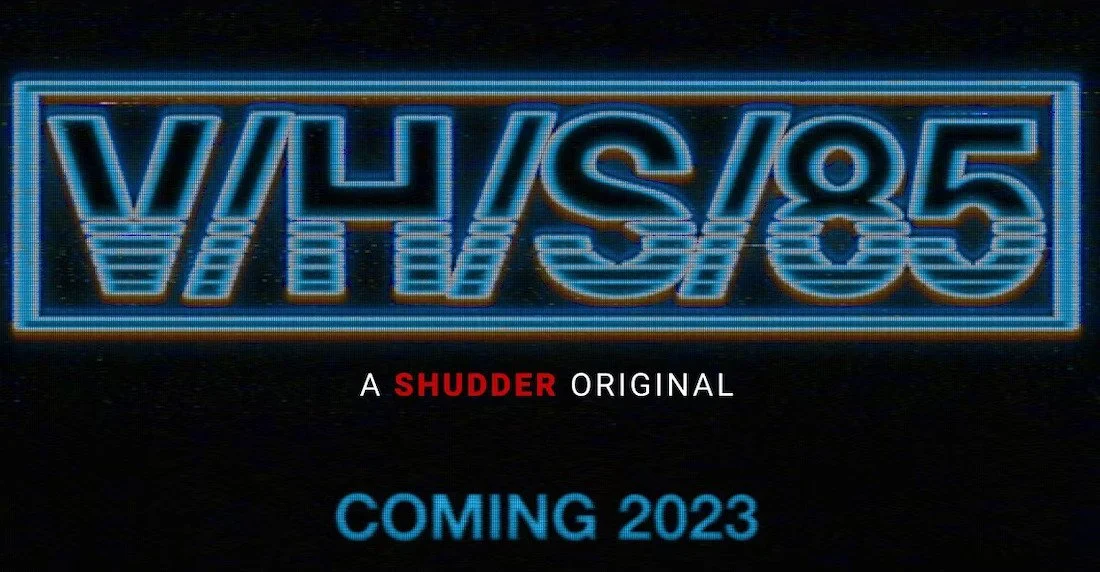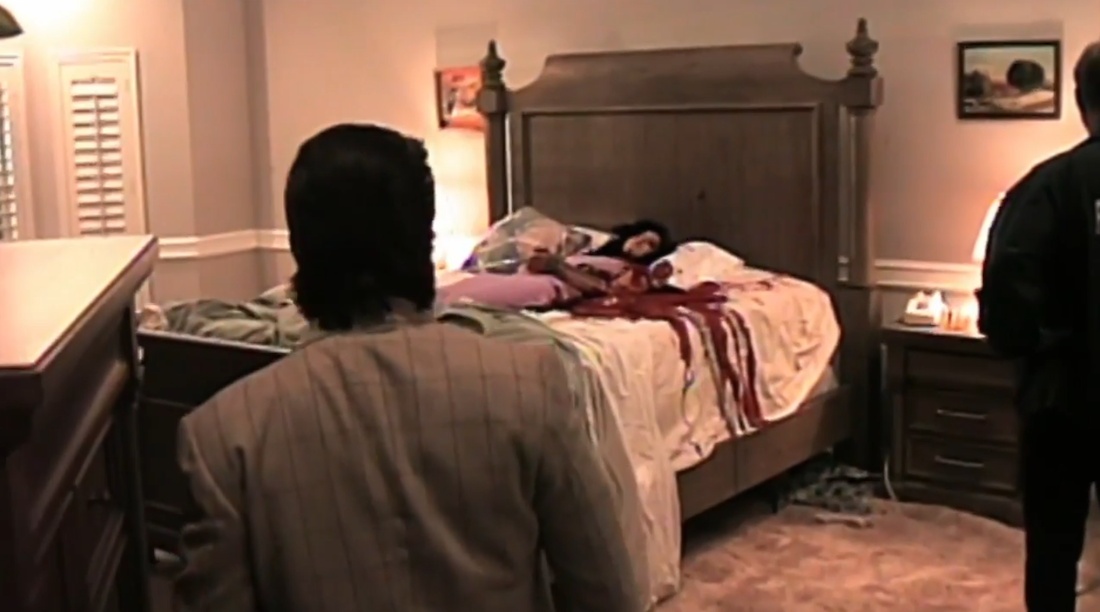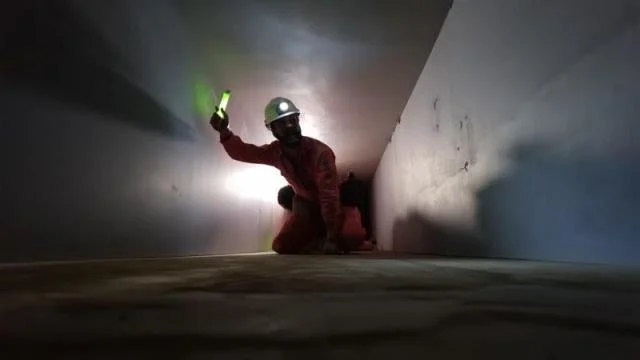Review: V/H/S/85 (2023) [Fantastic Fest]
Adjust Your Tracking…And Your Expectations
Only you can determine how you actually feel about a movie. Sure, there are those who inherently contrarian—immediately dismissing anything popular or generally well-received out of some pissy instinct they have. Then, conversely, there are people that go along with the crowd and parrot what others say. But even with these outward displays of judgment, at the end of the day you cannot hide from yourself or how you truly feel about things, even films. This is a long way to say that I was shocked to hear so many people gushing about V/H/S/85 after it finished screening. I thought it was uneven (but most anthologies are), used all of the overly familiar tropes of found footage horror, was terribly paced, and ultimately felt like missed opportunities across the board. Pointing out that others loved V/H/S/85 is also to say that I’m in the minority—perhaps you would greatly enjoy it, as many did. Hell, I wish I were one of them.
As opposed to most of the other entries in the franchise, V/H/S/85 does not have a real framing device for presenting these found video tapes, ostensibly all from 1985. There are feints that it’s all recorded off TV or some sort of mixed videotape, but that doesn’t make sense and it isn’t really emphasized anyways. The film is made up of five distinct segments directed by five different directors (based on individual scripts): David Bruckner directed the part called “Total Copy,” Mike P. Nelson helmed “No Wake,” Gigi Saul Guerrero was the director for “God of Death,” Natasha Kermani is behind “TKNOGD,” and Scott Derrickson is the director for “Dreamkill.”
Inherent to any anthology, especially any anthology involving multiple writers and directors, is an uneveness in quality, tone, and much more. To V/H/S/85’s credit, it maintains the same level throughout. It’s a level of bad, certainly, but it is consistent. All the segments feel of the same length, boast the same pedigree of f/x, same levels of acting talent, and so on. Again, if one works for viewers, then it’s probable that all of the other parts of this film will work equally as well.
I’m shocked that musical biopics still tread on the same formulas even after WALK HARD: THE DEWEY COX STORY came out and laid them all out in perfect parodic form. Haven’t we all recognized now the same story beats, inherent weaknesses/limitations, and overused conventions of the subgenre? Isn’t that the agreement we’ve all tacitly made is that we’re onto the scam, so much so that we find it laughable? V/H/S/85 is similar in this respect as it uses so many tired found footage horror tropes that were mocked in FOUND FOOTAGE 3D amongst other places.
“Why are people still filming?” In most segments, no satisfactory reason is provided for why a camera kept rolling throughout the various atrocities. While everything is falling apart, using the camera rarely makes sense. It works in “TKNOGD” as those are static cameras set to record a performance art piece, so no one is actually manually recording everything. But the rest just throw together a few garbled lines, acting like acknowledging the foolishness is the same as defanging it.
“Why was this edited if it’s just found?” and “Why is this all shot so professionally if it’s amateur recordings?” A few segments of V/H/S/85 attempt to answer this (particularly “Dreamkill”), but mostly it doesn’t add up how these various angles and dramatic cuts were placed into the structure (within the world of the film). When there’s a reason for such moves—like a film school assembling the footage for the investigation in CANNIBAL HOLOCAUST—then it works better. But some of this (“Total Copy”) is supposed to be in an episode of an edited TV show…even though it contains a ton of blood and swearing and more. It makes no internal logic and crumbles at the simplest of scrutiny. I guess Bruckner is banking on that or doesn’t think it matters in a grander scheme, but that just shows a lack of imagination for framing the same story you wish to tell.
Putting aside these tired tropes of the subgenre in which all of these entries indulge without any hint at wit or irony, the stories themselves just aren’t that interesting. Or, if there are interesting aspects to the segment, they are usually buried underneath other miscalculations or come far too late. “God of Death” has an interesting idea for a creature reveal, but the momentum towards it is squandered by far too much dialogue and narrative repetition along with a lack of character development—in other words, following people you don’t care about to watch them do the same uninteresting thing repeatedly—that the air has already been let out and the power diminished by the time you arrive at the good part.
And there are good parts to every segment. V/H/S/85 isn’t a totally awful movie with no redeeming values, it just happens to be very flawed with those shortcomings apparent (and dominant) throughout. Besides the aforementioned creature design in “God Of Death.” “TKNOGD” has some cool shots/practical f/x moments in its ending and “Dreamkill” has strong acting from Freddy Rodriguez and James Ransone. “No Wake” has a very clever reveal delivered late in its story, while “Total Copy” has a fine punchline (if not also grown worthy—even the praise comes with qualifications!). Maybe if they weren’t grouped together, the flaws of each segment wouldn’t be as pronounced as they are oft repeated and echoed in the others. But they are presented as one movie and so the same failings get louder and louder with each passing minute of its runtime.
All of the filmmakers behind this installment of the anthology are talented artists who have made strong work elsewhere. There is no questioning their merits as directors (though maybe some of their writing remains dubious) and all of the segments still reveal genuinely impressive abilities behind the camera. It’s just that so much of it is in service to hackneyed story telling, undercut by forced narrative delivery, non-existent character development, uninteresting cinematography, and more. Viewers can still see the shine of the talent of these filmmakers buried underneath the misfires of V/H/S/85, but that only serves to make it all a bit more disappointing.





